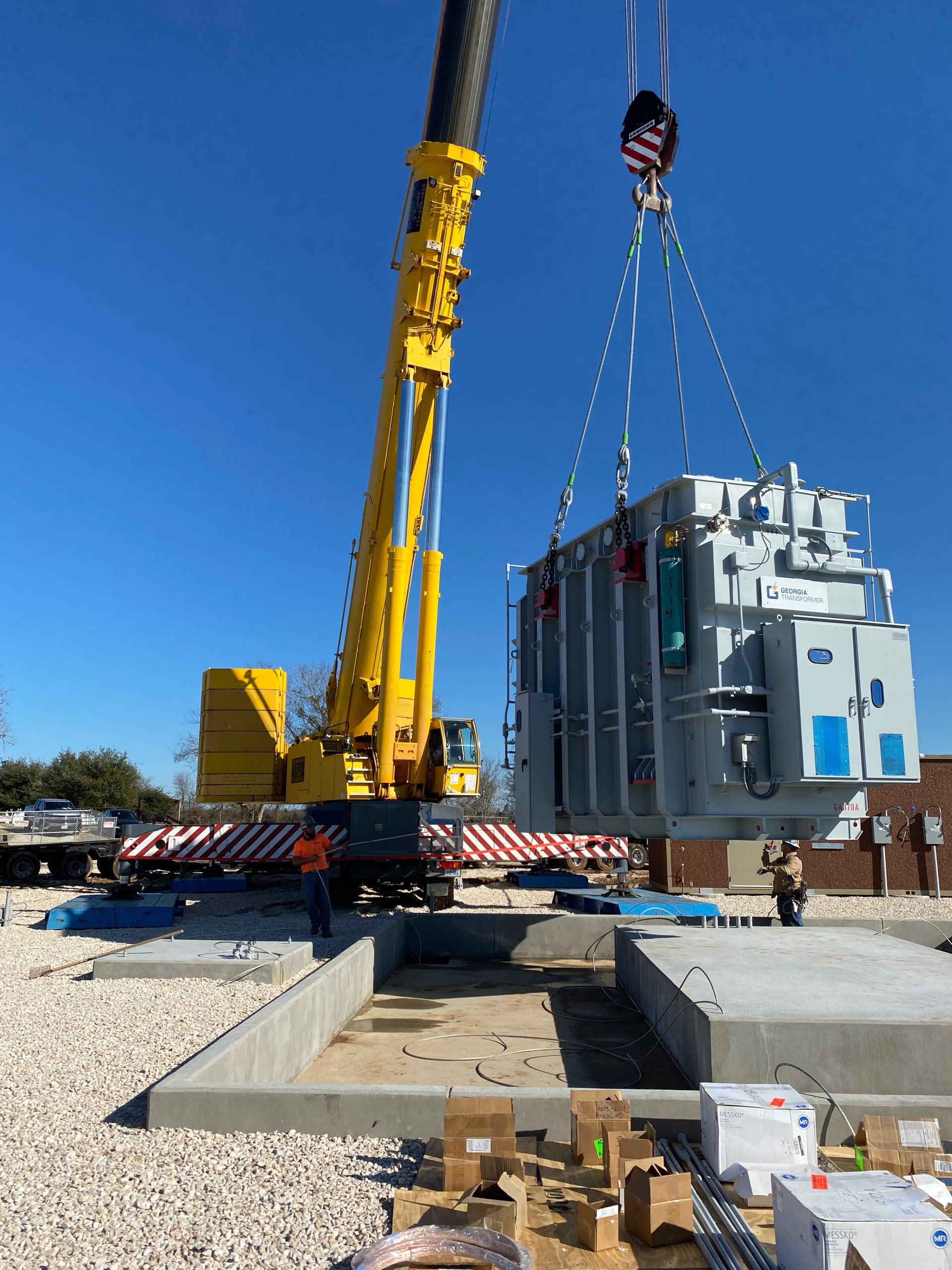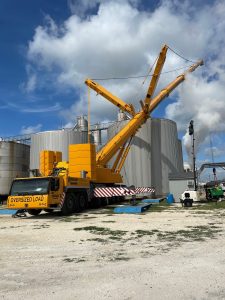
Heavy crane lifting is used in construction, manufacturing, and shipping. These tasks involve moving substantial weights beyond human capacity, making efficient and safe lifting equipment indispensable. Let’s explore the most important aspects of industrial lifting, from the types of equipment available to the latest technological advancements, and how to maximize efficiency in heavy crane lifting for industrial applications.
What is Industrial Lifting?
Industrial lifting encompasses the use of cranes and other heavy equipment to move, lift, or position massive loads. This type of lifting goes beyond basic material handling due to the weight, size, and complexity of items being moved. Typical applications include relocating structural components on a construction site, positioning heavy machinery in a factory, or loading and unloading shipping containers. Industrial lifting requires specialized knowledge, experience, and a thorough understanding of the equipment to ensure that operations are conducted safely and efficiently.
Types of Industrial Lifting Equipment
Choosing the appropriate lifting equipment is essential for effective and safe operations in industrial settings. The most common types of industrial lifting equipment include:
- Mobile Cranes: These cranes offer flexibility and can move around a job site, making them suitable for outdoor projects and situations where the crane needs to be relocated frequently.
- Tower Cranes: Commonly used in construction projects, tower cranes provide extensive height and reach, making them ideal for high-rise buildings and large construction sites.
- Overhead Cranes: Typically found in warehouses and factories, these cranes run on rails attached to the ceiling, offering smooth and stable lifting operations for consistent workflows.
- Crawler Cranes: With their tracked base, crawler cranes provide stability on rough terrain, making them an excellent choice for construction sites with uneven ground.
Each type of crane comes with unique advantages, so selecting the right one depends on the specific requirements of the project. Factors like terrain, load weight, and operational flexibility should guide decision-making to maximize safety and efficiency.
What Are the Types of Lifting Solutions?
In addition to choosing the right equipment, selecting the appropriate lifting solutions is equally important. Lifting solutions include both the methods and accessories that optimize crane performance for specific applications.
- Slings and Hooks: Often used with mobile and overhead cranes, slings and hooks come in various materials and configurations to accommodate different load types and sizes.
- Spreaders and Lifting Beams: Spreaders help distribute the load’s weight evenly, reducing strain on the crane and minimizing potential hazards. Lifting beams allow for multiple lifting points, which can stabilize the load and improve lifting precision.
- Hoists: Hoists provide controlled lifting, enabling operators to raise and lower loads with precision. Hoists are valuable in applications where incremental adjustments are critical.
- Remote-Controlled Lifting Solutions: Remote control provides operators with greater flexibility and safety, enabling them to operate cranes from a distance, especially in hazardous environments.
Key Safety Features in Industrial Lifting Equipment
Safety is paramount in heavy crane lifting, as the risks associated with handling large, heavy loads can have serious consequences. Modern industrial lifting equipment integrates advanced safety features to prevent accidents and protect operators.
- Load Moment Indicators (LMI): LMIs monitor the crane’s load and notify operators if they are approaching maximum capacity, preventing overloads.
- Anti-Collision Systems: Anti-collision systems use sensors to detect nearby objects and alert operators, reducing the risk of accidents on crowded job sites.
- Stabilizers and Outriggers: Stabilizers and outriggers provide additional support to mobile cranes, enhancing stability on uneven terrain and preventing tipping.
- Automatic Stop Mechanisms: Automatic stop mechanisms detect anomalies in the crane’s operation and halt the equipment to prevent potential malfunctions.
Technological Advancements in Industrial Lifting Equipment
With the increase in digital and automation technologies, industrial lifting equipment has evolved significantly. These advancements contribute to greater precision, enhanced safety, and better overall project management:
- IoT Integration: Many cranes are now equipped with IoT (Internet of Things) sensors that provide real-time data on equipment performance, enabling predictive maintenance and reducing downtime.
- Augmented Reality (AR) for Training: Augmented reality technology offers a more immersive training experience, allowing operators to practice crane operations and troubleshooting scenarios in a safe, simulated environment.
- Automated Crane Systems: Automation allows cranes to operate with minimal human intervention, improving precision and reducing human error. Automated systems are particularly useful in repetitive tasks, as they provide consistency and efficiency.
- Data Analytics for Load Management: Data analytics software helps track load data and operation patterns, which can optimize load distribution and improve efficiency on the job site.
Contact Bobcat Contracting for Heavy Crane Lifting Services
Choosing a professional partner is essential for industrial projects that demand reliable heavy crane lifting services. Bobcat Contracting specializes in providing heavy crane lifting solutions customized to your job. Bobcat Contracting delivers the expertise and efficiency needed to elevate your project to success. For more information on maximizing efficiency in heavy crane lifting, reach out to Bobcat Contracting.

